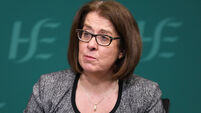Public to rate top medical advances
The British Medical Journal (BMJ) has drawn up a shortlist of 15 medical breakthroughs made since its launch in 1840.
The list has been compiled from more than 100 nominations by BMJ readers and includes achievements such as the discovery of antibiotics, the launch of the contraceptive pill, and the development of vaccines.
The project marks a redesign of the journal and its website.
Fifteen leading doctors and scientists have been chosen to champion each of the breakthroughs.
They include Professor Carl Djerassi, who created the pill, and Dr Stephanie Snow, a descendant of John Snow, who discovered anaesthesia in the 1800s.
Voting will close on Sunday, January 14, with the winning breakthrough announced by broadcaster Jon Snow at an event on January 18.
Dr Fiona Godlee, BMJ editor, said: “Any of these milestones would make a deserving winner — they have all made an enormous contribution to society and made a difference to millions of lives. It will be fascinating to see which one will come out on top.
“It’s also an opportunity to consider how these milestones will develop medicine in the future.
“Will genetics deliver on its promise of real clinical benefit? Can computers help us achieve optimal health for all?
And will the endgame for smoking be just 20 years away, as one of ourchampions confidently asserts?
“It looks set to be an exciting competition and I urge everyone to join the debate and get voting.”
* Anaesthesia: Dr John Snow discovered anaesthesia in the 1800s and came up with the theory that cholera was transmitted by water.
* Antibiotics: In 1929, Alexander Fleming, at St Mary’s Hospital Medical School in London, reported that the culture on which a penicillin mould had grown attacked certain bacteria.
* Chlorpromazine to treat mental illness The drug 4560 RP, later called chlorpromazine, was synthesised in 1950 by Paul Charpentier, a chemist with Laboratoires Rhone-Poulenc.
* Computers: Some argue that computers had their origin in the mechanical, eight-digit calculator that Pascal built in the Age of Enlightenment.
* DNA structure: Discovered by James Watson and the late Francis Crick in 1953.
* Evidence-based medicine: The term, based on the best research and clinical evidence available, was coined in 1991 by a group at McMaster University, Ontario.
* Germ theory: The idea that germs can spread and cause disease was discovered in 1847 in France.
* Imaging The idea of an X-ray was discovered by accident in 1895 by a German physicist, Wilhelm Conrad Rontgen of Wurzburg.
* Immunology: Understanding of how the immune system distinguishes cells from “foreign” cells underwent huge development in 1958 under the French medical researcher Jean Dausset.
* Oral rehydration therapy: Developed in the early 1970s to replace fluids and chemicals lost through diarrhoea and vomiting.
* The contraceptive pill: Developed throughout the 1950s.
* Risks of smoking: Two landmark studies in the 1950s led to a growing body of evidence on the harmful effects of tobacco.
* Sanitation: Britain led the way in the early 1800s on why sanitation was important for public health.
* Tissue culture: The idea of growing tissue emerged in the US in 1949.
* Vaccines: Louis Pasteur introduced a rabies vaccine in 1885.
To vote, log on to www.bmj.com











